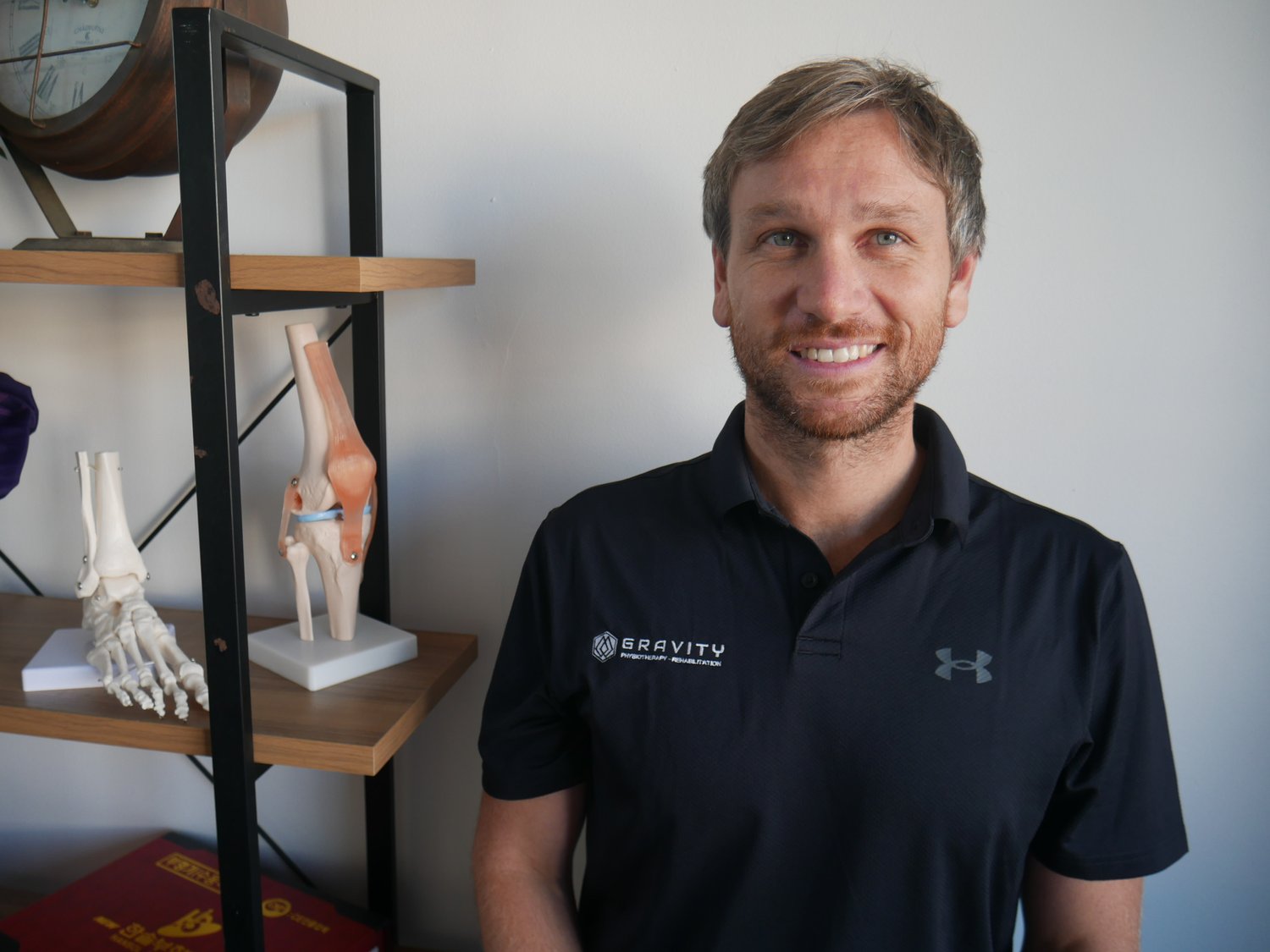Is Physiotherapy an Effective Treatment for Headaches?
Can Physio Help Your headaches?
Headaches can be debilitating and have a significant impact on a person's quality of life. While there are various treatment options available, physiotherapy has emerged as a promising approach for managing and reducing headaches. In this article, we will explore how physiotherapy can be an effective treatment for headaches, including different types of headaches and the role of physiotherapy in their management.
Understanding Different Types of Headaches
Before delving into the role of physiotherapy in headache treatment, it's important to understand the different types of headaches that individuals may experience. Some common types of headaches include:
Cervicogenic Headache: This type of headache originates from dysfunctions or injuries in the upper cervical spine. It is often associated with pain or stiffness in the neck and can be treated by addressing the cervical spine dysfunctions.
Chronic Daily Headache: Chronic Daily Headache is a persistent headache that can be categorized into different types, such as chronic tension-type headache, new daily persistent headache, chronic migraine, and hemicrania continua. These headaches are often related to issues in the upper cervical spine.
Cluster Headache: Cluster headaches are rare but extremely severe and debilitating. They occur in cycles and are characterized by intense pain localized to a small area of the head. Cluster headaches are often known for their severity.
Migraine Headache: Migraines are experienced by many, often with no specific cause or trigger identified. These headaches are often moderate to severe and may include symptoms such as nausea, vomiting, and sensitivity to light, sound, and smell.
5. Occipital Neuralgia: Occipital neuralgia is caused by the compression or irritation of branches of the occipital nerve, leading to severe pain along the distribution of these nerves. It is commonly associated with skin sensitivity, pain behind the eyes, and nausea.
6. Sinus Headache: Sinus headaches are caused by inflammation of the sinuses, leading to increased pressure and pain in the face. Symptoms may include a runny or blocked nose, watery eyes, and pressure in the sinuses.
7. Tension Type Headache: Tension type headaches are the most common type of primary headache. They are characterized by a constant pressing or tightening discomfort on both sides of the head, often described as wearing a tight helmet.
8. Trigeminal Neuralgia: Trigeminal neuralgia is a sharp, shooting, or stabbing pain experienced on one side of the face. It can be aggravated by light touch or mundane activities such as chewing or speaking.
9. Whiplash Headache: Whiplash injuries, often resulting from car accidents or sports injuries, can cause various types of headaches, including cervicogenic headaches, migraines, and tension-type headaches.
Now that we have a better understanding of the different types of headaches, let's explore how physiotherapy can effectively manage and treat these conditions.
The Role of Physiotherapy in Headache Treatment
Physiotherapy plays a crucial role in the management and treatment of headaches, particularly those related to dysfunctions in the upper cervical spine. By targeting the underlying causes and addressing the dysfunctions or injuries in the neck, physiotherapy can provide relief and reduce the frequency and intensity of headaches.
Assessment and Diagnosis
The first step in physiotherapy treatment for headaches is a thorough assessment and diagnosis. A qualified physiotherapist will evaluate the patient's medical history, perform a physical examination, and conduct specific tests to identify the type and underlying causes of the headache. This comprehensive assessment helps in developing an individualized treatment plan.
Manual Therapy Techniques
One of the key components of physiotherapy for headaches is the use of manual therapy techniques. These techniques involve hands-on manipulation and mobilization of the cervical spine and surrounding structures to improve joint mobility, reduce muscle tension, and alleviate pain. Examples of manual therapy techniques used in headache treatment include:
Joint mobilizations: Controlled movements of the joints in the cervical spine to improve range of motion and reduce pain.
Soft tissue mobilization: Techniques such as massage, myofascial release, and trigger point therapy to release tension and tightness in the muscles.
Neural mobilization: Gentle movements to mobilize and desensitize the nerves in the upper cervical spine and head.
Dry needling and acupuncture: This can be an adjunct to treatment to add targeted relief to certain area of tissue tightness or guarding, nerve tension or pain.
Posture Correction and Ergonomic Advice
Poor posture and ergonomics can contribute to headaches, especially those originating from the neck. Physiotherapists can assess and correct postural imbalances and provide ergonomic advice for workspaces and daily activities. This may involve recommending proper sitting and standing positions, exercises to strengthen postural muscles, and modifications to workstations to reduce strain on the neck and upper back.
Exercise and Rehabilitation
Physical exercises and rehabilitation play a vital role in headache treatment. Physiotherapists prescribe specific exercises to improve strength, flexibility, and stability of the cervical spine and surrounding muscles. These exercises help in restoring normal movement patterns, reducing tension, and preventing future headaches. Additionally, physiotherapists may incorporate other techniques such as Pilates, yoga, or tai chi to promote overall well-being.
Education and Lifestyle Modification
An important aspect of physiotherapy for headaches is educating patients about their condition and empowering them with self-management strategies. Physiotherapists provide guidance on lifestyle modifications, stress management techniques, relaxation exercises, and strategies to avoid triggers that may exacerbate headaches. By understanding their condition and adopting healthy habits, patients can actively participate in their own recovery and prevention of headaches.
Additional Treatment Modalities
In addition to manual therapy and exercise, physiotherapy may incorporate other treatment modalities to enhance the effectiveness of headache treatment. These may include:
Heat or cold therapy: The application of heat or cold packs to reduce inflammation, muscle tension, and pain.
Electrical stimulation: The use of electrical currents to stimulate muscles, promote blood circulation, and relieve pain.
Acupuncture or dry needling: The insertion of thin needles into specific points to stimulate the body's natural healing response and alleviate pain.
It's important to note that the specific treatment approach may vary depending on the individual's condition and the underlying causes of their headaches. A qualified physiotherapist will tailor the treatment plan to address the unique needs of each patient.
Pharmacology for Headache Relief and Management
Pharmacology plays a pivotal role in headache management, offering a range of medications that target various aspects of headache symptoms, including pain relief, inflammation reduction, and relaxation of constricted blood vessels.
These medications are often tailored to the specific type of headache, whether it's tension, migraine, or cluster headaches. While medications have been the go-to approach, a more holistic strategy is emerging, recognizing the importance of addressing underlying factors that contribute to headache occurrences.
Analgesics (Paracetamol and Ibuprofen): Over-the-counter pain relievers like acetaminophen and nonsteroidal anti-inflammatory drugs (NSAIDs) are frequently used for mild to moderate headaches, providing relief by reducing pain and inflammation.
Triptans: Triptans are prescription medications specifically designed to target migraines. They work by narrowing blood vessels and blocking pain pathways in the brain, effectively alleviating migraine symptoms.
Beta Blockers and Antidepressants: Certain beta blockers and antidepressants, prescribed off-label for headache management, can help reduce the frequency and severity of migraines by modulating neurotransmitters and influencing blood vessel dilation.
Levagen: Levagen, a potential breakthrough, addresses headache triggers like tension, stress, and inflammation through its anti-inflammatory ingredient, palmitoylethanolamide (PEA). Often tied to muscle tension, headaches find relief through Levagen's inflammation modulation. This aligns with physiotherapy's approach to muscular imbalances. By partnering with physiotherapy's relaxation techniques and posture corrections, Levagen aims to comprehensively alleviate both headache symptoms and their underlying causes.
These pharmaceutical options are often tailored to the type and severity of the headache, aiming to provide effective relief and enhance the quality of life for individuals affected by headaches.
The Effectiveness of Physiotherapy in Headache Treatment
Numerous studies and clinical trials have demonstrated the effectiveness of physiotherapy in treating headaches, particularly those related to the upper cervical spine.
Research has shown that manual therapy techniques, such as joint mobilizations and soft tissue mobilization, can significantly reduce pain intensity, frequency, and duration of headaches. In some cases, physiotherapy has been found to be as effective as medication in managing headaches.
Physiotherapy also offers a non-invasive and drug-free approach to headache treatment, making it a safe and suitable option for individuals who prefer to avoid or reduce their reliance on medication. Furthermore, the benefits of physiotherapy extend beyond symptom management, as it addresses the underlying causes and promotes long-term improvements in overall neck and spinal health.
Conclusion
Physiotherapy has emerged as a valuable and effective treatment option for managing and reducing headaches. By targeting the underlying causes and utilizing various techniques such as manual therapy, exercise, posture correction, and lifestyle modification, physiotherapy can provide relief, improve neck and spinal health, and enhance overall well-being. If you are experiencing headaches, it is recommended to consult with a qualified physiotherapist who can assess your condition and develop a personalized treatment plan to help alleviate your symptoms and improve your quality of life.
Remember, physiotherapy for headaches should always be conducted under the guidance of a qualified healthcare professional. If you are experiencing severe or persistent headaches, it is important to consult with a medical professional for a proper diagnosis and appropriate treatment.









